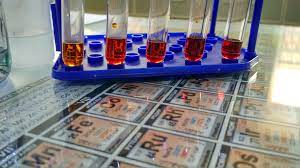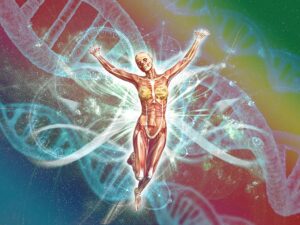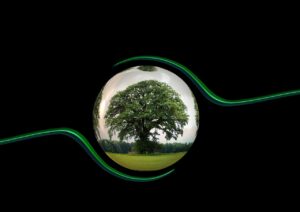- What is the primary function of enzymes?
- Enzymes catalyze biochemical reactions by lowering activation energy.
- Define metabolism.
- Metabolism refers to all the biochemical reactions occurring in a living organism.
- What is the basic unit of carbohydrates?
- Monosaccharides are the basic units of carbohydrates.
- Name the process by which glucose is broken down to produce energy.
- Glycolysis.
- What is the role of ATP in cellular metabolism?
- ATP (adenosine triphosphate) serves as the primary energy currency of the cell.
- Which biomolecule stores genetic information?
- DNA (Deoxyribonucleic Acid).
- What is the function of RNA?
- RNA (Ribonucleic Acid) serves as a messenger, carrying genetic information from DNA to the ribosomes for protein synthesis.
- Define denaturation.
- Denaturation is the process by which proteins lose their native structure and function due to changes in temperature, pH, or chemical environment.
- Name the building blocks of proteins.
- Amino acids.
- What is the primary structure of a protein?
- The primary structure of a protein refers to the linear sequence of amino acids.
- What is the role of hemoglobin in the body?
- Hemoglobin transports oxygen from the lungs to tissues and carries carbon dioxide from tissues back to the lungs.
- Define pH.
- pH is a measure of the acidity or alkalinity of a solution, determined by the concentration of hydrogen ions.
- Name the enzyme responsible for breaking down starch into maltose.
- Amylase.
- What is the function of lipids in the body?
- Lipids serve as energy storage molecules, structural components of cell membranes, and signaling molecules.
- What is the main function of cholesterol in the body?
- Cholesterol is a component of cell membranes and serves as a precursor for the synthesis of steroid hormones.
- Define osmosis.
- Osmosis is the movement of solvent molecules (usually water) across a semi-permeable membrane from an area of lower solute concentration to an area of higher solute concentration.
- What is the function of the mitochondria in a cell?
- Mitochondria are the powerhouse of the cell, responsible for generating ATP through cellular respiration.
- Name the process by which cells convert glucose into ATP in the absence of oxygen.
- Fermentation.
- Define anabolism.
- Anabolism refers to the metabolic pathways that build molecules, requiring energy input.
- Name the two types of nucleic acids.
- DNA (Deoxyribonucleic Acid) and RNA (Ribonucleic Acid).
- What is the role of ribosomes in the cell?
- Ribosomes are the sites of protein synthesis in the cell, where mRNA is translated into proteins.
- Define diffusion.
- Diffusion is the passive movement of molecules from an area of higher concentration to an area of lower concentration until equilibrium is reached.
- What is the function of the Golgi apparatus?
- The Golgi apparatus processes, modifies, and packages proteins and lipids synthesized in the cell.
- Name the process by which plants convert light energy into chemical energy.
- Photosynthesis.
- Define catabolism.
- Catabolism refers to the metabolic pathways that break down molecules, releasing energy.
- Name the enzyme responsible for breaking down proteins into peptides.
- Protease.
- What is the role of insulin in the body?
- Insulin regulates blood glucose levels by promoting the uptake of glucose into cells and the storage of excess glucose as glycogen in the liver and muscles.
- Define glycolysis.
- Glycolysis is the metabolic pathway that converts glucose into pyruvate, producing ATP and NADH.
- Name the building blocks of nucleic acids.
- Nucleotides.
- What is the function of the endoplasmic reticulum?
- The endoplasmic reticulum is involved in protein and lipid synthesis, as well as the transport of molecules within the cell.
- Define substrate.
- Substrate is the molecule upon which an enzyme acts.
- Name the process by which genetic information is copied from DNA to RNA.
- Transcription.
- What is the function of coenzymes in enzymatic reactions?
- Coenzymes assist enzymes in catalyzing biochemical reactions by carrying chemical groups or electrons.
- Define activation energy.
- Activation energy is the energy required to initiate a chemical reaction.
- Name the process by which ATP is synthesized using energy derived from the proton gradient across the inner mitochondrial membrane.
- Oxidative phosphorylation.
- What is the role of chlorophyll in photosynthesis?
- Chlorophyll absorbs light energy and initiates the process of photosynthesis by converting light energy into chemical energy.
- Define allosteric regulation.
- Allosteric regulation is the regulation of enzyme activity by binding of a regulatory molecule to a site other than the active site, thereby changing the enzyme’s shape and activity.
- Name the process by which RNA is translated into proteins.
- Translation.
- What is the function of the cytoskeleton in the cell?
- The cytoskeleton provides structural support to the cell, facilitates cell movement, and plays a role in intracellular transport.
- Define feedback inhibition.
- Feedback inhibition is a mechanism by which the end product of a metabolic pathway inhibits an earlier step in the pathway, regulating the overall rate of the pathway.
- Name the enzyme responsible for catalyzing the conversion of ATP to cAMP.
- Adenylate cyclase.
- What is the function of peroxisomes in the cell?
- Peroxisomes are involved in the breakdown of fatty acids and detoxification of harmful substances.
- Define phosphorylation.
- Phosphorylation is the addition of a phosphate group to a molecule, often used to activate or deactivate proteins in cellular signaling pathways.
- Name the process by which water is split into oxygen, protons, and electrons during photosynthesis.
- Photolysis.
- What is the function of phospholipids in cell membranes?
- Phospholipids form the basic structure of cell membranes and help regulate the passage of molecules into and out of the cell.
- Define competitive inhibition.
- Competitive inhibition is a type of enzyme inhibition where a molecule similar in structure to the substrate competes with the substrate for binding to the active site of the enzyme, thereby reducing enzyme activity.
- Name the enzyme responsible for catalyzing the conversion of carbon dioxide and water into glucose during photosynthesis.
- Rubisco (Ribulose-1,5-bisphosphate carboxylase/oxygenase).
- What is the function of DNA polymerase in DNA replication?
- DNA polymerase synthesizes new strands of DNA by adding nucleotides complementary to the template strand during DNA replication.
- Define deoxyribonucleic acid (DNA).
- DNA is a molecule that carries the genetic instructions for the development, functioning, growth, and reproduction of all known living organisms and many viruses.
- Name the process by which the genetic code in mRNA is decoded to synthesize a specific protein.
- Translation.



